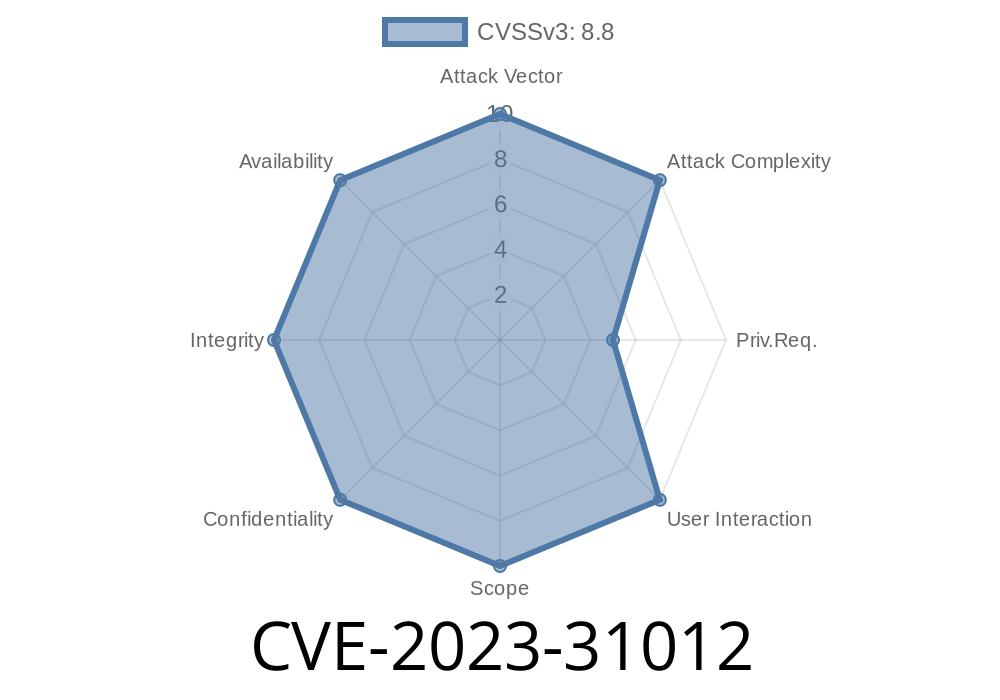Security vulnerabilities should be taken very seriously, especially when they involve critical hardware and systems that are essential to the functioning of various applications and services. One such vulnerability has been identified in the NVIDIA DGX H100 Baseboard Management Controller (BMC) with the identification code CVE-2023-31012. A successful exploit of this vulnerability may lead to escalation of privileges and information disclosure. This post will focus on the particulars of this vulnerability, the code snippets to understand it better, links to official references, and steps to mitigate the risk.
Description of Vulnerability (CVE-2023-31012)
NVIDIA DGX H100 BMC contains a vulnerability in the REST (REpresentational State Transfer) service, specifically in the improper input validation mechanism. It allows an attacker with low-level network privileges to exploit this vulnerability potentially, leading to an escalation of privileges and information disclosure.
REST service is utilized by many organization’s APIs for creating, reading, updating, and deleting data across different systems. The improper input validation issue in NVIDIA DGX H100 BMC’s REST service means that specific types of data inputs can interfere with the system's functioning and lead to these vulnerabilities.
An attacker that can successfully exploit this vulnerability will have the potential to
1. Gain unauthorized access to sensitive data and information stored within the system, including user credentials and potentially sensitive configuration details.
2. Escalate the privileges of their current user account, allowing them to perform actions that they would not typically have access to, such as changing system settings or deleting data.
3. Potentially use this newly gained access and information to carry out further attacks on the system or use the compromised system as a foothold to target other systems within the network.
To give you a clearer understanding of this vulnerability, let's take a look at this example code snippet:
import requests
url = "https://vulnerable_dgx_h100_bmc/rest_service/api/v1/resource";
data = {
"unsafe_input": "<script>alert('Exploited')</script>"
}
headers = {
"Content-Type": "application/json"
}
response = requests.post(url, data=data, headers=headers)
In the above code snippet, the unsafe_input variable contains a malicious script that, when sent as a data input through a POST request to the REST service, can exploit the improper input validation vulnerability in the NVIDIA DGX H100 BMC and create potential security risks.
Links to Original References
1. NVIDIA Security Bulletin: https://nvidia.custhelp.com/app/answers/detail/a_id/5261
2. CVE Details: https://cve.mitre.org/cgi-bin/cvename.cgi?name=CVE-2023-31012
3. NIST NVD: https://nvd.nist.gov/vuln/detail/CVE-2023-31012
To protect your NVIDIA DGX H100 BMC from this vulnerability, we recommend the following steps
1. Update your NVIDIA DGX H100 BMC firmware to the latest version available, as this may contain patches and fixes for the known vulnerability.
2. Implement strict input validation mechanisms within the REST service - do not allow the input of any unexpected special characters or scripts.
3. Regularly monitor the usage and access patterns to your REST service, ensuring that any suspicious activity is swiftly investigated and dealt with.
Conclusion
It's essential to stay vigilant regarding potential security vulnerabilities in the hardware and systems your organization relies on. CVE-2023-31012 presents a risk to NVIDIA DGX H100 BMC users that should be addressed through updates and increased awareness of potential exploits. By staying informed and proactive, you can help protect your systems and data from this vulnerability and others like it.
Timeline
Published on: 09/20/2023 02:15:00 UTC
Last modified on: 09/22/2023 16:11:00 UTC
